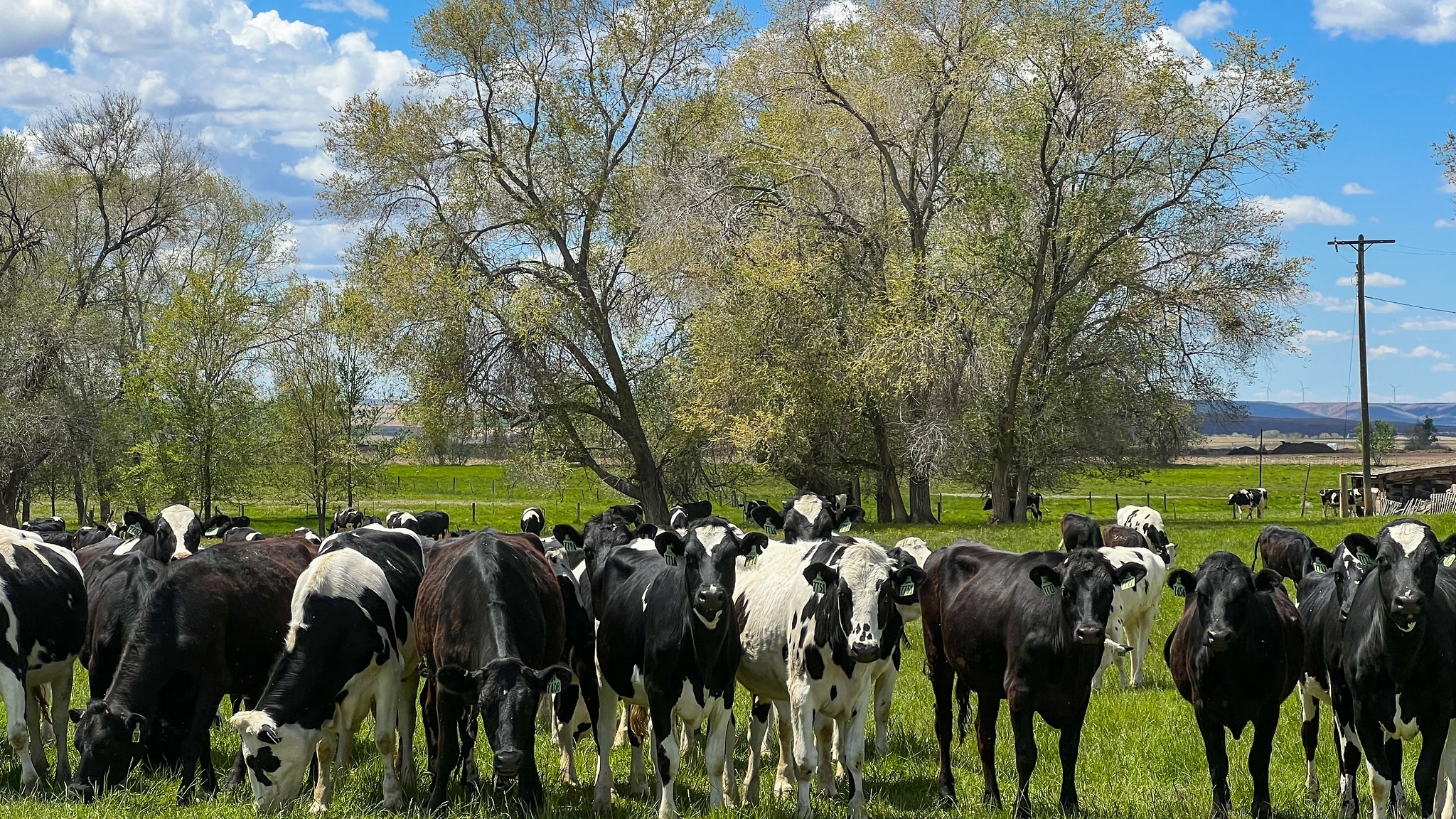Foot-and-Mouth Disease

Foot-and-mouth disease (FMD) is a severe, fast-spreading viral disease that primarily affects cloven-hoofed animals, including cows, pigs, sheep, goats, and deer.
FMD is one of the most challenging animal diseases to control. Although most infected animals survive, they're left weak and unable to produce the level of meat and milk prior to infection. FMD was first discovered in the United States in 1870 and eradicated in 1929.
FMD is not a human health or food safety threat. The disease is not related to hand, foot, and mouth disease, a common childhood illness caused by a different virus.
There are 7 known types and more than 60 subtypes of the FMD virus, meaning immunity to one type doesn't protect animals against other types or subtypes. The first signs of illness usually appear within 2 to 14 days after infection. Here's what to look for:
- Fever
- Great increase in temperature for 2 to 3 days
- Blisters/Vesicles
- Blisters can develop on the tongue and lips, in and around the mouth, on the mammary glands, and around the hooves. They rupture and discharge clear or cloudy fluid.
- Erosions
- When blisters pop, they leave raw, eroded areas surrounded by ragged fragments of loose tissue.
- Excess saliva
- Infected animals may have sticky, foamy, and stringy saliva.
- Loss of appetite
- Painful tongue and mouth blisters may lead animals to eat less.
- Lameness and a reluctance to move or stand
- Abortions
- Animals can experience spontaneous abortions and sterility.
- Milk
- Dairy cows may have low milk production.
- Heart disease and death
- These symptoms are especially prevalent in newborn animals.
FMD Can Easily Be Confused With Other Diseases
FMD may be confused with other diseases that produce blisters, including vesicular stomatitis, bluetongue, bovine viral diarrhea, foot rot in cattle, and swine vesicular disease. The only way to tell if the blisters are caused by the FMD virus is through laboratory testing. If you observe mouth or feet blisters in your animals, report them immediately so that they can be tested.
You can help prevent FMD. Take these steps:
- Report signs of disease. Livestock owners, livestock transport and slaughter personnel, and private veterinarians should watch for symptoms of FMD and immediately report sick animals to Federal, State, Tribal, or local animal health officials. This is especially important if the animals in question have had contact with other animals at locations like livestock markets, feedlots, or fairgrounds.
- Be careful what you pack. When traveling outside of the United States, don't bring back any prohibited items (including food) or dirty footwear or clothing that could potentially move the FMD virus or other disease agents.
- Declare to U.S. Customs and Border Protection. Upon entering the United States, travelers should indicate to U.S. Customs any visits to farms, ranches, or other areas where livestock are raised or kept. You should also declare any visits to zoos, circuses, fairs, and other facilities or events where animals were exhibited.
- Follow a “5-day” rule. If you visited a farm or had any contact with livestock on your trip, you should avoid all contact with livestock, zoo animals, or wildlife for 5 days after you return to the United States. If you're returning with pet dogs or cats that have had contact with livestock or been in areas frequented by livestock, make sure your pet’s feet, fur, and bedding are free of any dirt or mud and that their bedding doesn't contain straw, hay, or other natural materials. Bathe your pet as soon as you reach your final destination and keep it from all livestock for at least 5 days after returning to the United States.
In the event of an outbreak, APHIS may authorize the use of a vaccine to help prevent further spread and protect healthy animals.
Report Signs of Animal Disease
Producers or owners who suspect an animal disease should contact their veterinarian to evaluate the animal or herd. Find an accredited veterinarian.
Animal health professionals (veterinarians; diagnostic laboratories; public health, zoo, or wildlife personnel; and others) report diagnosed or suspected cases of nationally listed reportable animal diseases to APHIS District Offices and to the State animal health official as applicable under State reporting regulations.
Controlling FMD
How APHIS Is Keeping FMD From Resurging in the United States
Because FMD occurs in many parts of the world, there's always a chance it could be reintroduced into the United States. APHIS continuously monitors for FMD worldwide. Our veterinarians stationed overseas help other countries control and eradicate the disease, which reduces the risk of it spreading to the United States.
At ports of entry, we work with the U.S. Department of Homeland Security’s Customs and Border Protection to screen cargo and prevent travelers from bringing any products of concern into the United States. We restrict or prohibit imports of many animals and animal byproducts from areas known to be affected with FMD. We also work with the U.S. Armed Forces to make sure military vehicles and equipment are properly cleaned and disinfected before they return to the United States from international duty.
Across the country, APHIS and other Federal, State, and Tribal animal health officials work with accredited veterinarians to monitor domestic livestock for FMD. We have response plans in place that we can quickly activate if the disease is found in the United States.

